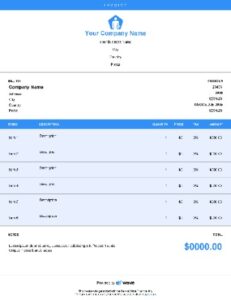Content

That moment your employees take to pause and decide whether to click on the link/attachment could mean the difference between experiencing an event or not. After July 2, the minimum advance amount that can be claimed on a Form 7200 is $25. A Form 7200 requesting an advance of less than $25 will not be processed. Section if the preparer was paid to prepare Form 7200 and isn’t an employee of the filing entity. The preparer must give you a copy of Form 7200 in addition to the copy to be filed with the IRS.

While your people continue to be one of the biggest threats, they can also be one of your biggest assets, in both preventing issues from occurring and then responding quickly and appropriately when they do. Through the years, disaster recovery plans have been the usual response. Mostly, the emphasis has been on recovering data after a non-security IT event, often discussed in context of a fire, power loss, or hardware failure. Increasingly, cyber-attacks are creeping into the forefront of planning efforts. The challenge with cyber-events is that they are murkier to understand – and harder for leadership – to assist with. You may be outsourcing a component of your technology environment or collections, but you are not outsourcing the accountability for it—from an internal administrative standpoint or from a legal standpoint.
May IRS Updates Form 7200: Advance Payment of Employer Credits Due to COVID-19
Amount of all advances received and copies of completed Form 7200 you filed with the IRS. Documentation to show how you figured the amount of the employee retention credit. For more information about third-party payers filing Form 7200, see the frequently asked questions at IRS.gov/PLC. For information on the different types of third-party payer arrangements, see section 16 of Pub. The COVID-19 related employee retention credit has been extended and amended.
- Employers can receive both a Small Business Interruption Loan under the PPP and the credit for qualified sick leave wages; however, employers can’t receive both loan forgiveness and a credit for the same wages.
- If an employer is entitled to an employee retention credit of $10,000 and was required to deposit $8,000 in employment taxes, the employer could retain the entire $8,000 of taxes as a portion of the refundable tax credit it is entitled to and file a request for an advance payment for the remaining $2,000 using Form 7200.
- • An advance payment of the credits for sick and family leave for self-employed individuals is not available at this time.
- 6 years after the date the tax becomes due or is paid, whichever is later.
- The rules for qualified sick leave wages discussed below apply to qualified sick leave wages paid for leave taken after March 31, 2021..
For employers that weren’t in existence in 2019, advance payments are limited to small employers that averaged 500 or fewer full-time employees in 2020. For more information, see the instructions for line E, line H, and line 1, later. Generally, the same wages can’t be used for both the credit for qualified sick leave wages and the credit for family leave wages. Additionally, none of the wages used for these leave credits can be used for the employee retention credit or certain other credits. The credit for qualified sick leave wages and qualified family leave wages doesn’t apply to wages taken into account as payroll costs for a Small Business Interruption Loan under the PPP that is forgiven or in connection with shuttered operator grants and restaurant revitalization grants. See the instructions for line 2 and line 3, later, for more information.
Errors Employers Should Avoid When Requesting Advance Payment of Employer Credits
An employer can receive tax credits for qualified leave wages under the FFCRA and a Small Business Interruption Loan under the CARES Act; however, these wages do not qualify as “payroll costs” for purposes of loan forgiveness under the CARES Act. In Lines 6 and 7, employers indicate the total amount by which they’ve already reduced their federal employment tax deposits for credits in the applicable quarter and the total advance credits requested in previous filings for Form 7200 in the applicable quarter . The guidance sets forth the information employers should collect and retain to substantiate eligibility for the qualified sick and family leave tax credits. The IRS instructs employers not to reduce their deposits and request advance credit payments for the same expected credit.
New DOL questions and answers provide much needed clarity to employers struggling to understand this new law. With respect to the employee’s inability to work or telework because of a need to care for a child older than 14 during daylight hours, a statement that special circumstances exist requiring the employee to provide care. The 7200 Worksheet – COVID-19 report, one of a number of custom reports in the Accounting CS Library, can help you complete Part 2 of the 7200 form for Advance Payment of Employer Credits Due to COVID-19. You can find instructions on this form on the About Form 7200, Advance Payment Of Employer Credits Due To Covid-1page on the IRS website. Once you select this set of drivers, find an historical loss period — a period of years corresponding to the estimated remaining life of the portfolio in question — where the historical drivers best approximate those you’re expecting in the future, based on your forecasts.
COVID-19 Resources
If the caps discussed above do not eliminate the employer’s payroll tax liability, the payroll tax credits also include qualified health plan expenses paid or incurred by the employer to provide and maintain a group health plan. There are similar credits to the above for self-employed individuals. The employer share of social security and Medicare tax allocable to the qualified sick leave wages paid. For the second quarter, qualified wages don’t include https://quick-bookkeeping.net/why-is-my-tax-refund-delayed/ wages for which the employer receives a credit for sick and family leave, and any wages taken into account in determining the employee retention credit can’t be taken into account as wages for purposes of the credits under sections 41, 45A, 45P, 45S, 51, and 1396. For the third and fourth quarters, qualified wages under section 3134 don’t include wages taken into account for credits under sections 41, 45A, 45P, 45S, 51, 1396, 3131, and 3132.

Rather, an employer will need to reconcile any advance credit payments and reduced deposits on its applicable employment tax return. Additionally, employers may provide employees with paid family leave if the employee is unable to work due to any of the conditions for which eligible employers may provide paid sick leave under the EPSLA. If there are not sufficient payroll taxes to cover the full amount of mandatory benefits paid, employers will be able file a request for an accelerated payment from the IRS. In conjunction with the FAQs, the Treasury Department has released Form 7200, Advance Payment of Employer Credits Due to COVID-19. Employers can file Form 7200 to claim an advance credit for the allowable credit amount in excess of the employer’s total payroll tax deposits.


